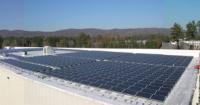| Create a Free Account or Sign In to connect and share in green living and alternative energy forum discussions. |
Energy: Can The U.s. Jump Back Into The Solar Race?
Views: 587
Mar 04 2012 03:10 PM | eds in Ed's Articles
 BOSTON—Back in 1995, when the global market for solar panels was small,
BOSTON—Back in 1995, when the global market for solar panels was small,. . . the U.S. shipped more than 40% of the world’s photovoltaic modules,
. . . which produce electricity from light.
Today the number is closer to 4%.
As China, Taiwan, Europe and Japan have dramatically stepped up production
. . . of photovoltaics, American companies have not kept pace
. . . with a growing industry.
But the U.S. Department of Energy (DOE) is not throwing in the towel.
. . . The DOE’s SunShot initiative aims to revive the U.S. solar industry
. . . to create green jobs, and drive down prices in the process
. . . so that solar can compete with fossil-fuel energy sources.
“The first premise is the fact that we want to have subsidy-free solar electricity,”
. . . SunShot director Ramamoorthy Ramesh said here this week
. . . at a meeting of the American Physical Society.
SunShot, he said, aims to drop the price of solar power by about 75% by 2020,
. . . bringing down the purchase and installation costs of solar arrays
. . . to about $1 per watt.
. . . “These are very lofty goals,” Ramesh acknowledged.
. . . “It’s very difficult to do this.”
From the name on down, SunShot is meant to evoke
. . . the moon shots of the 1960s and 1970s, and
. . . like the Apollo program it stems from a presidential directive
. . . to solve difficult problems in science and technology.
. . . (With about $300 million a year in federal funding, however,
. . . SunShot is small potatoes compared to the Apollo program.)
The problem is compounded by the numerous nested jurisdictions in the U.S.,
. . . where a potential solar buyer may have to contend with overlapping local and
. . . state laws—along with paperwork from each—that affect the solar installation. Interfacing with the local utility adds an extra layer of complexity.
My colleague George Musser has written extensively about
. . . the head-spinning bureaucratic complications he has encountered
. . . in installing solar panels on his New Jersey roof.
According to Ramesh that is not the case in Germany,
. . . far and away the world leader in solar power adoption.
. . . In 2009 that nation had 6 times as much
. . . installed solar capacity as the U.S. does.
“In Germany it’s a single set of papers, 4 or 5 pages,” Ramesh said.
. . . “It’s a very quick process.”
If solar energy is to reach the dollar-a-watt level in the U.S.,
. . . the balance-of-system costs will have to shrink to a fraction
. . . of their present-day levels.
. . . That means not only technological advances that make solar panels
. . . easier to install and connect to the grid
. . . but also broad procedural changes across government agencies.
. . . “It’s a very tough beast to kill,” Ramesh acknowledged.
Source: worldofphotovoltaics

